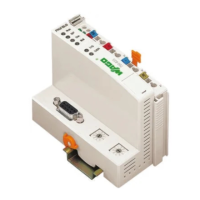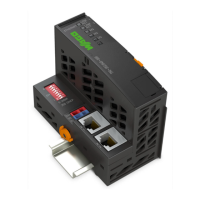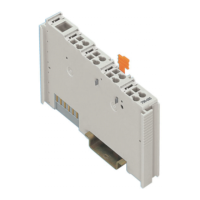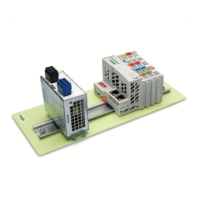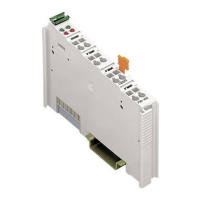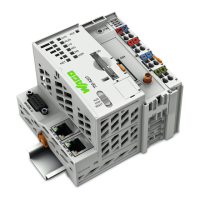Step-by-Step Guide to your own Linux Application • 101
Setup of the Development Environment
WAGO-I/O-SYSTEM 750
Linux Fieldbus Coupler
5.4.1 PC Terminal Program Configuration (serial)
In order to communicate with the Linux fieldbus coupler console via the serial
interface of your PC, you require a terminal program. This can be minicom
under Linux, or Hyperterminal under Windows.
During the Linux coupler start-up, the selector switch must be in the upper
position in order to start the Linux console.
The Linux console has the following preset values (38400 8-N-1):
• Baud rate: 38400 bits per second
• Data bits: 8
• Parity: none
• Stop bits: 1
• Flow control: none
If minicom is not communicating, check if the right interface has been
configured. To do so, start the program with the option "-s" and verify the
settings in the menu item "Serial port setup".
Fig. 5-1: Configuration of the serial interface in minicom p0860011d
Press the <Strg> + <a><z> key combination to view a list with available
functions.

